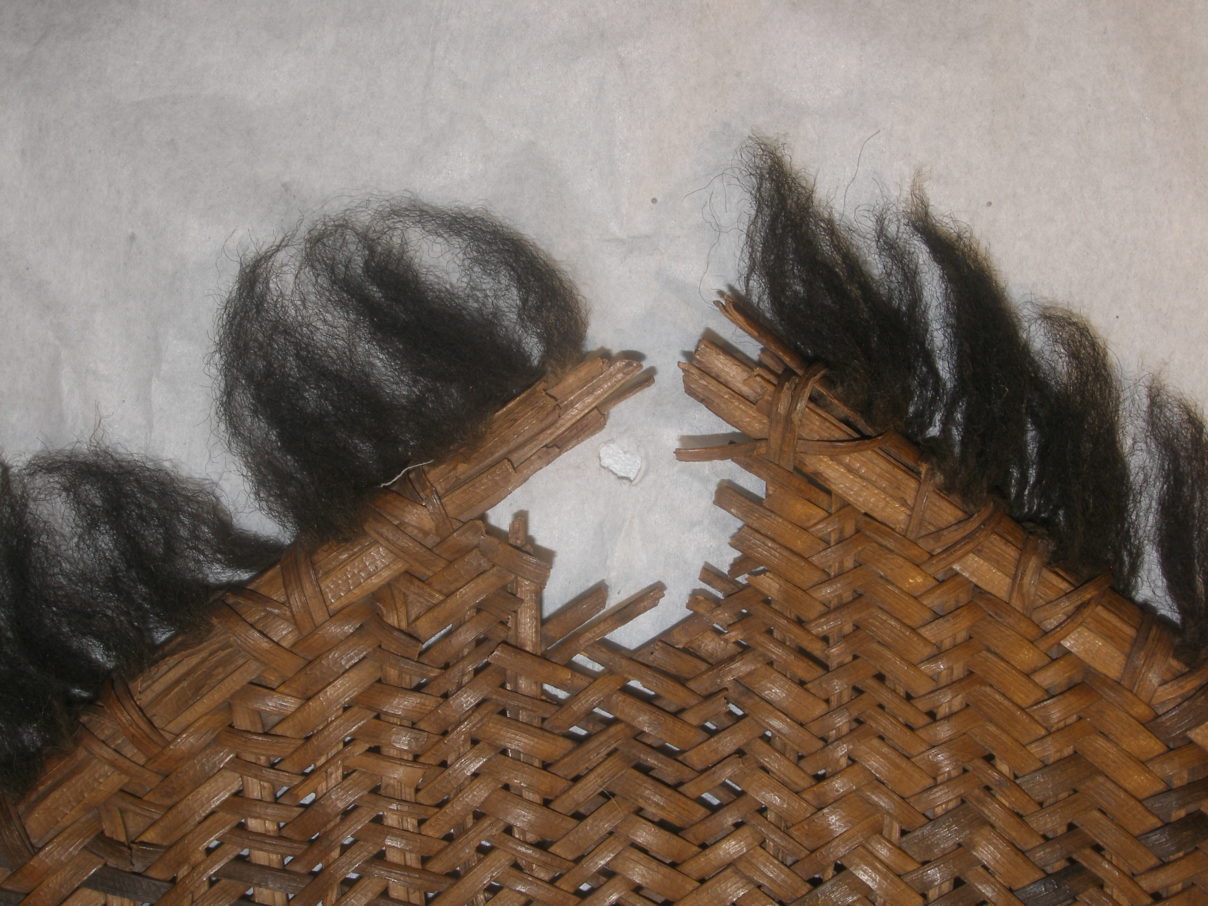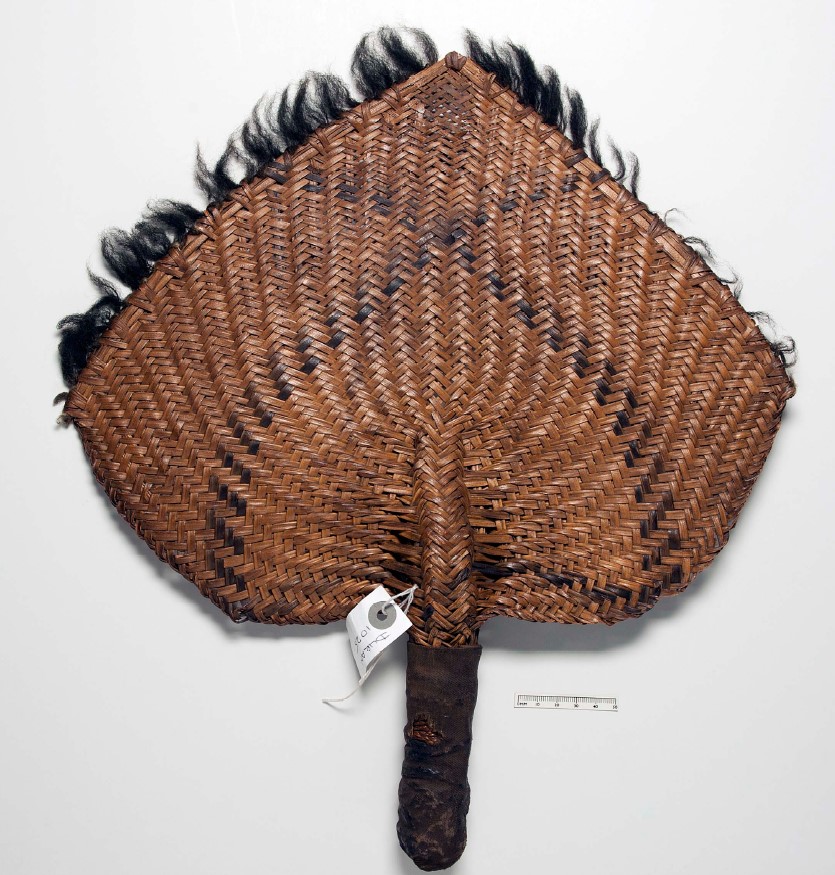Fijian Iribuli Fan
Object

The object is an Iribuli fan from the Anthropology Department’s teaching collection. Iribuli fans serve a practical purpose in Fiji’s tropical, temperate climate and are also used in Meke dances, as accoutrements of war, or badges of rank.
Meke dances help to recount, preserve and / or celebrate significant events, such as the great comet, the eclipse of the sun, and measles epidemics. Highly respected ‘guardians of oral tradition’ devise Meke dances.

The Meke is a gesture dance performed from a standing position by a single-sex group. Extensive, disciplined rehearsal of the Meke with spear or Iribuli ensures exceptional precision, showcasing highly desirable social traits, much applauded by the Fijians.
The traditional Meke dance performed with Iribuli is also taught in the Fijian school curriculum. Children learn and relay historical events, spellings and mental arithmetic through Meke dance.
Condition
- A thick layer of dirt is present on the surface
- There is substantial surface material loss at the tip of the fan
- The are multiple splintered ends on the fan
- A number of the plant fibres show delaminating surfaces
Conservation

The Iribuli fan was lightly brushed and vacuumed in order to remove the loose dirt from the surface. As this method did not remove any of the ingrained dirt on the surface, dry cleaning methods were employed. Small sections of smokesponge were gently brushed over the surface of the fan, which removed the more ingrained dirt.
Dirt from the weave intersections was unable to be removed using this method so solvent cleaning was introduced. A solvent appropriate for organic material was chosen and applied locally using cotton wool swabs. This successfully removed the stubborn dirt and left the fan with a coherent finish.

As this object is part of a teaching collection, future handling was guaranteed. Therefore it was deemed necessary to consolidate the splintered and frayed sections of the fan. A number of consolidants were tested on sections of fraying rattan as this behaved in a similar way to the material on the fan. Once a successful consolidant was found, it was applied to the fraying and delaminating sections of the fan using a soft brush and allowed to cure.
The decision was made to repair the damage at the tip of the fan as leaving it could result in further damage and surface material loss. A number of similar materials were tested to see which would be the most successful to weave and teak wood veneer was chosen as the most appropriate.
The teak veneer was adhered to the original material using a suitable adhesive and then woven in a pattern mimicking the original. As the colour of the teak didn’t blend well with the original material it was colour matched using acrylic paints. This would ensure the eye wasn’t drawn to the repair. Finally, a small section of Japanese tissue was adhered to the fan repair to close, and secure the tip.
